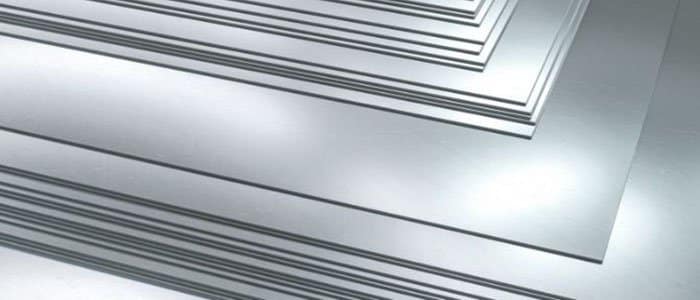Selecting the right titanium alloy is a critical decision that impacts the performance, longevity, and cost of any engineering project. While titanium is celebrated for its high strength-to-weight ratio and excellent corrosion resistance, not all titanium alloys are created equal.This article provides a clear, side-by-side comparison of 15333 Titanium and Grade 5 Titanium. We will examine their chemical compositions, mechanical properties, and key performance characteristics to help you determine which alloy is best suited for your specific application.
Understanding the Alloys: What Are They?
Before diving into a comparison, it’s essential to understand the fundamental nature of each alloy.
Grade 5 Titanium (Ti-6Al-4V)
Grade 5, also known by its chemical designation Ti-6Al-4V, is the most commonly used titanium alloy in the world. It is an alpha-beta alloy, meaning its microstructure consists of both alpha and beta phases of titanium. This dual-phase structure is achieved by adding aluminum (the alpha stabilizer) and vanadium (the beta stabilizer).
The result is an alloy that offers a significant increase in strength over commercially pure titanium grades while retaining good ductility and excellent overall properties. Its widespread use means it is readily available, well-understood, and supported by extensive manufacturing data.
15333 Titanium
15333 is a less common but highly specialized titanium alloy. It is also an alpha-beta alloy but features a more complex chemical composition designed to provide superior performance in specific, high-stress conditions. The “15333” designation is part of a specific nomenclature system, and it is often compared to other high-performance alloys like Ti-6Al-2Sn-4Zr-2Mo or Ti-6Al-2Sn-4Zr-6Mo, depending on the exact specification.
Its primary design focus is on achieving an exceptional combination of high strength, deep hardenability, and good creep resistance at elevated temperatures. This makes 15333 a candidate for applications where standard Grade 5 may not meet the more extreme performance requirements.
Head-to-Head Comparison: Key Properties
-
Chemical Composition
Grade 5 (Ti-6Al-4V): As its name suggests, its composition is approximately 90% Titanium, 6% Aluminum, and 4% Vanadium, with trace amounts of other elements like iron and oxygen. This relatively simple composition is the key to its versatility and cost-effectiveness.
15333 Titanium: This alloy has a more complex chemistry, typically including elements like Aluminum, Vanadium, Molybdenum, Zirconium, and Tin. For example, a common similar alloy is Ti-6Al-2Sn-4Zr-6Mo. These additional elements are specifically chosen to enhance high-temperature stability and strength.
-
Mechanical Properties
Tensile Strength:
Grade 5: Offers a minimum tensile strength of around 895 MPa (130 ksi). This is significantly higher than pure titanium and is sufficient for a vast range of applications, from aerospace components to medical implants.
15333: Engineered for higher strength, 15333 can exhibit a tensile strength of 1170 MPa (170 ksi) or more, depending on the exact heat treatment. This represents a substantial increase over Grade 5.
Density:
Both alloys have a density of approximately 4.43 g/cm³. There is no significant difference in weight for a given volume.
Fracture Toughness:
Grade 5: Possesses good fracture toughness, making it resistant to crack propagation under stress.
15333: Generally offers higher fracture toughness than Grade 5, which is a critical advantage in components subjected to high cyclic loads or where failure must be prevented at all costs.
-
Corrosion Resistance
Both alloys inherit the outstanding corrosion resistance of titanium. They form a stable, passive oxide layer on their surface that protects them from most environments, including saltwater, chlorides, and many industrial chemicals. For the majority of applications, the corrosion resistance of both alloys is effectively identical and excellent.
-
Weldability and Fabrication
Grade 5: One of its major advantages is its good weldability. It can be readily welded using standard techniques like TIG and MIG welding, though it requires an inert argon atmosphere to shield the weld pool from contamination. It is also relatively easy to machine and form compared to other titanium alloys.
15333: This alloy is more challenging to work with. Its higher strength and complex chemistry make it less weldable than Grade 5. Welding often requires specialized procedures and post-weld heat treatment to maintain its mechanical properties in the weld zone. It is also generally more difficult to machine, which can increase manufacturing time and cost.
Application Areas
Typical Applications for Grade 5 Titanium (Ti-6Al-4V):
Aerospace: Aircraft structural components, engine fan blades, compressor discs, and landing gear.
Medical: Orthopedic implants (hips, knees, bone screws), dental implants, and surgical instruments.
Marine: Propeller shafts, rigging hardware, and heat exchangers due to its excellent resistance to saltwater.
Industrial: Chemical processing equipment, pressure vessels, and high-performance automotive parts like connecting rods and valves.
Typical Applications for 15333 Titanium:
High-Performance Aerospace: Jet engine components that operate at higher temperatures and stresses than Grade 5 can withstand, such as high-pressure compressor discs and blades.
Critical Rotating Parts: Any application where a combination of high strength, high fracture toughness, and fatigue resistance is paramount, such as in power generation turbines.
Specialized Defense: Components for missiles and other systems where material performance is pushed to the absolute limit.
Summary Table: 15333 vs. Grade 5 at a Glance
| Feature | Grade 5 Titanium (Ti-6Al-4V) | 15333 Titanium |
| Primary Use | General-purpose high-strength alloy | High-stress, high-temperature specialist |
| Tensile Strength | ~895 MPa (130 ksi) | ~1170 MPa+ (170 ksi+) |
| Key Strengths | Excellent balance of strength, weight, and corrosion resistance; good weldability | Superior strength and fracture toughness; excellent creep resistance |
| Key Limitations | Lower strength ceiling compared to 15333 | Poorer weldability; more difficult and expensive to fabricate |
| Cost & Availability | Lower cost; widely available | Higher cost; limited availability and longer lead times |
| Common Applications | Aerospace structures, medical implants, marine hardware | High-temp jet engine parts, critical rotating components |
Conclusion: Making the Right Choice for Your Project
The choice between 15333 and Grade 5 titanium boils down to a simple question: Do you need the absolute highest performance, or is a balance of performance and practicality more important?
- Choose Grade 5 Titanium if: Your application requires a strong, lightweight, and corrosion-resistant material that is also cost-effective and relatively easy to fabricate. For 90% of high-performance titanium applications, Grade 5 is the proven, reliable, and economical choice.
- Choose 15333 Titanium if: You are designing a component for an extreme environment where the superior strength, fracture toughness, and high-temperature performance of 15333 are non-negotiable. Be prepared for higher material costs and more complex manufacturing challenges.
At Dahxun Alloy Co., Ltd., we supply a comprehensive range of titanium alloys, including both Grade 5 and specialized grades like 15333. Our team of experts can help you analyze your project needs and source the perfect material for the job. Contact us today to discuss your requirements and receive a competitive quote.




